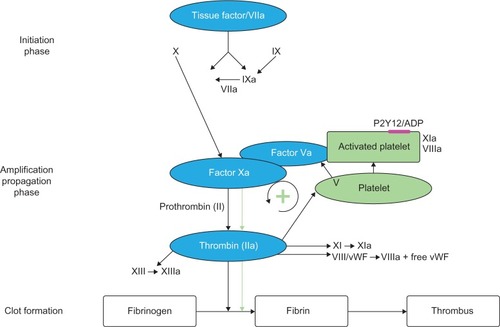Figures & data
Figure 1 Schematic overview of the coagulation cascade.
Abbreviations: ADP, adenosine diphosphate; vWF, von Willebrand factor.

Figure 2 Pathophysiology of atherothrombosis and therapeutic targets.

Table 1 Summary of clinical trials of oral anticoagulants in ACS
Table 2 Efficacy and safety outcomes in the Phase III ATLAS ACS 2 TIMI 51 studyTable Footnote*
